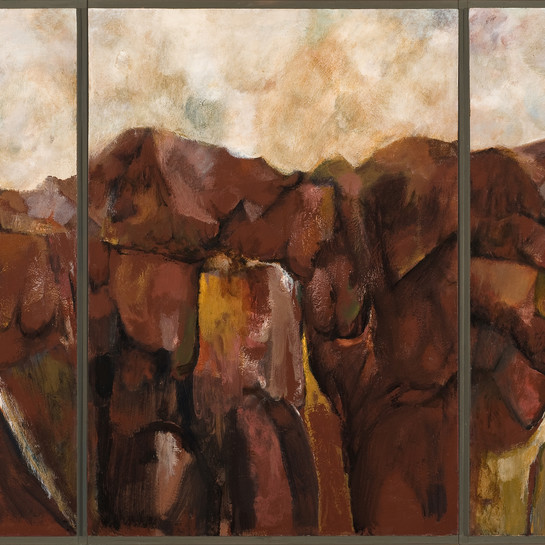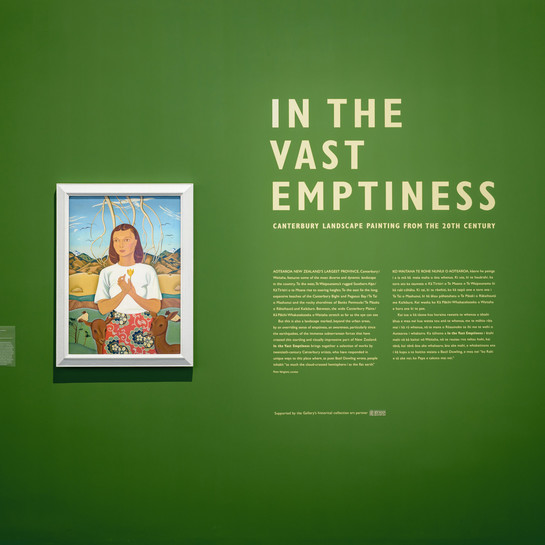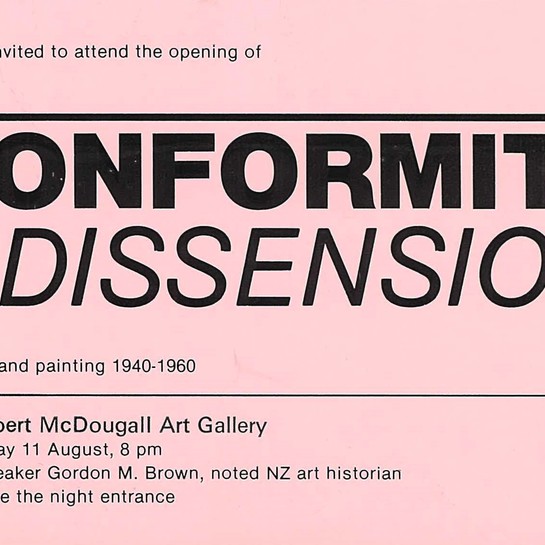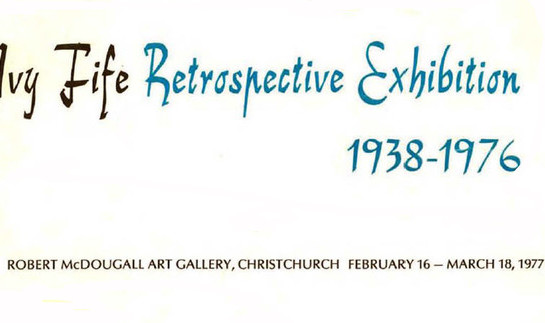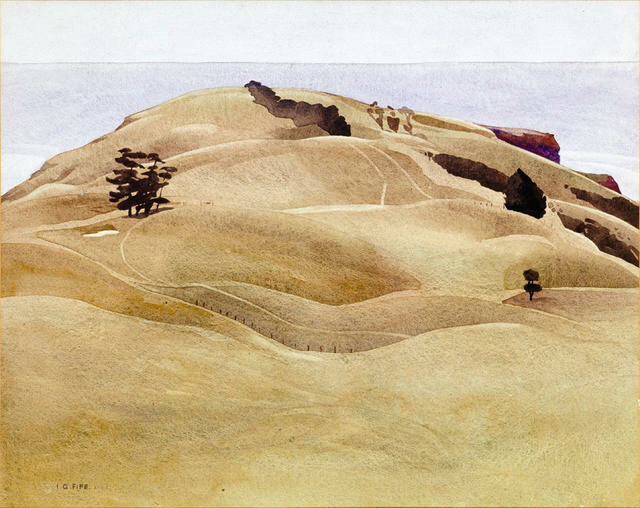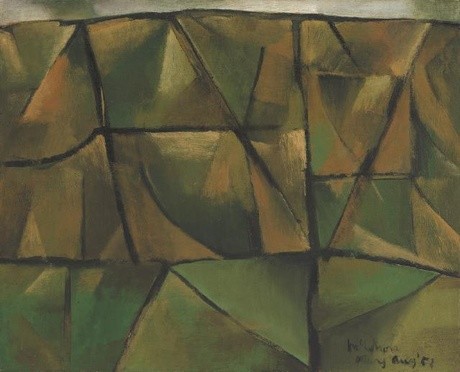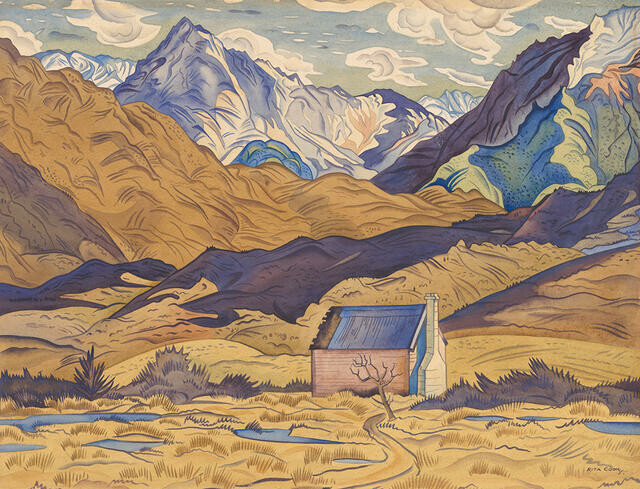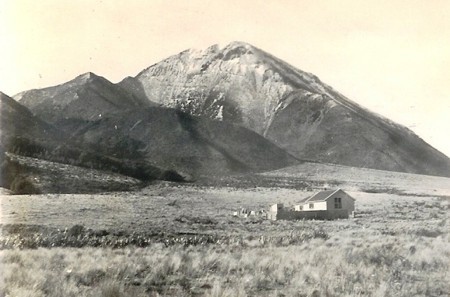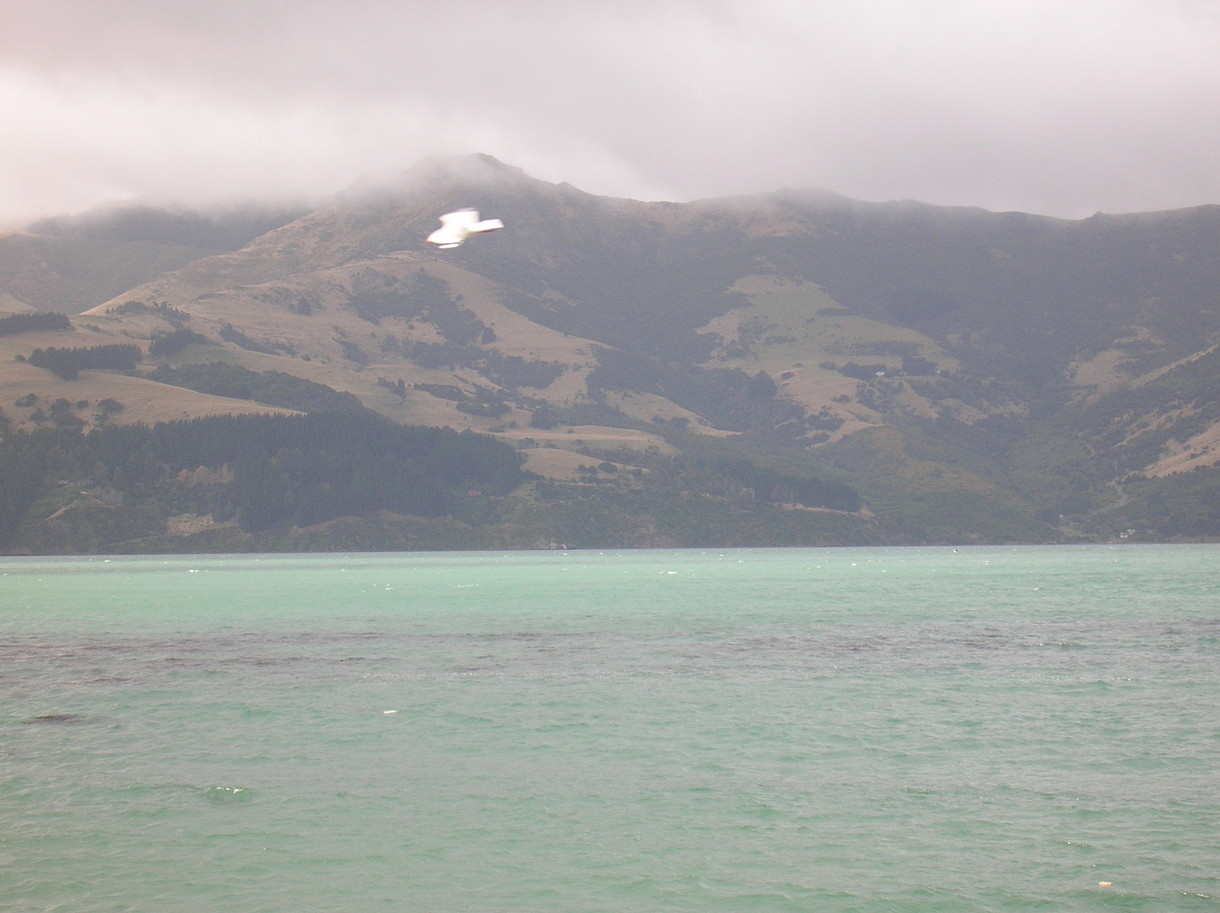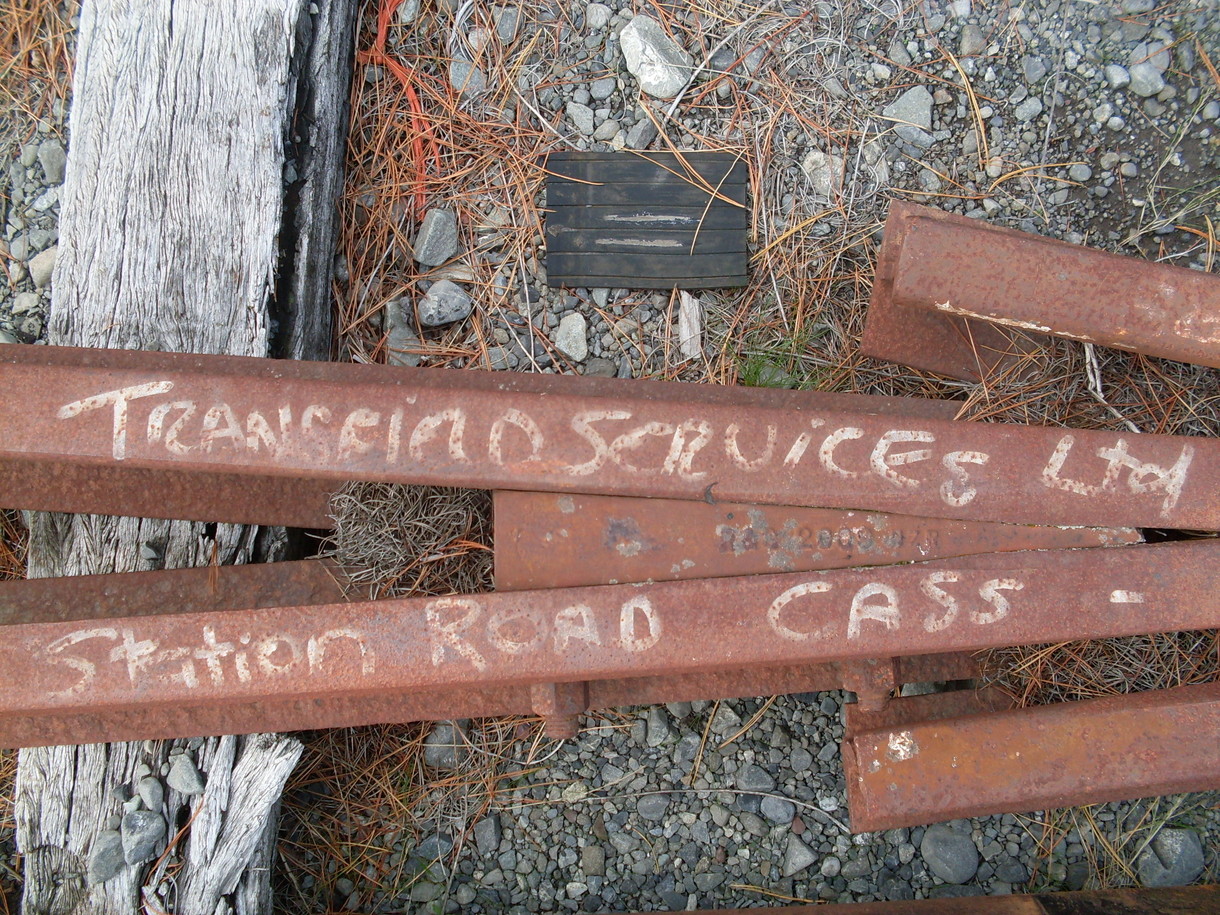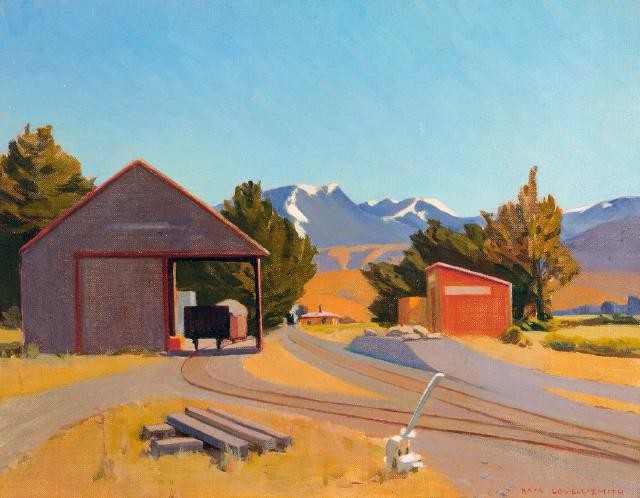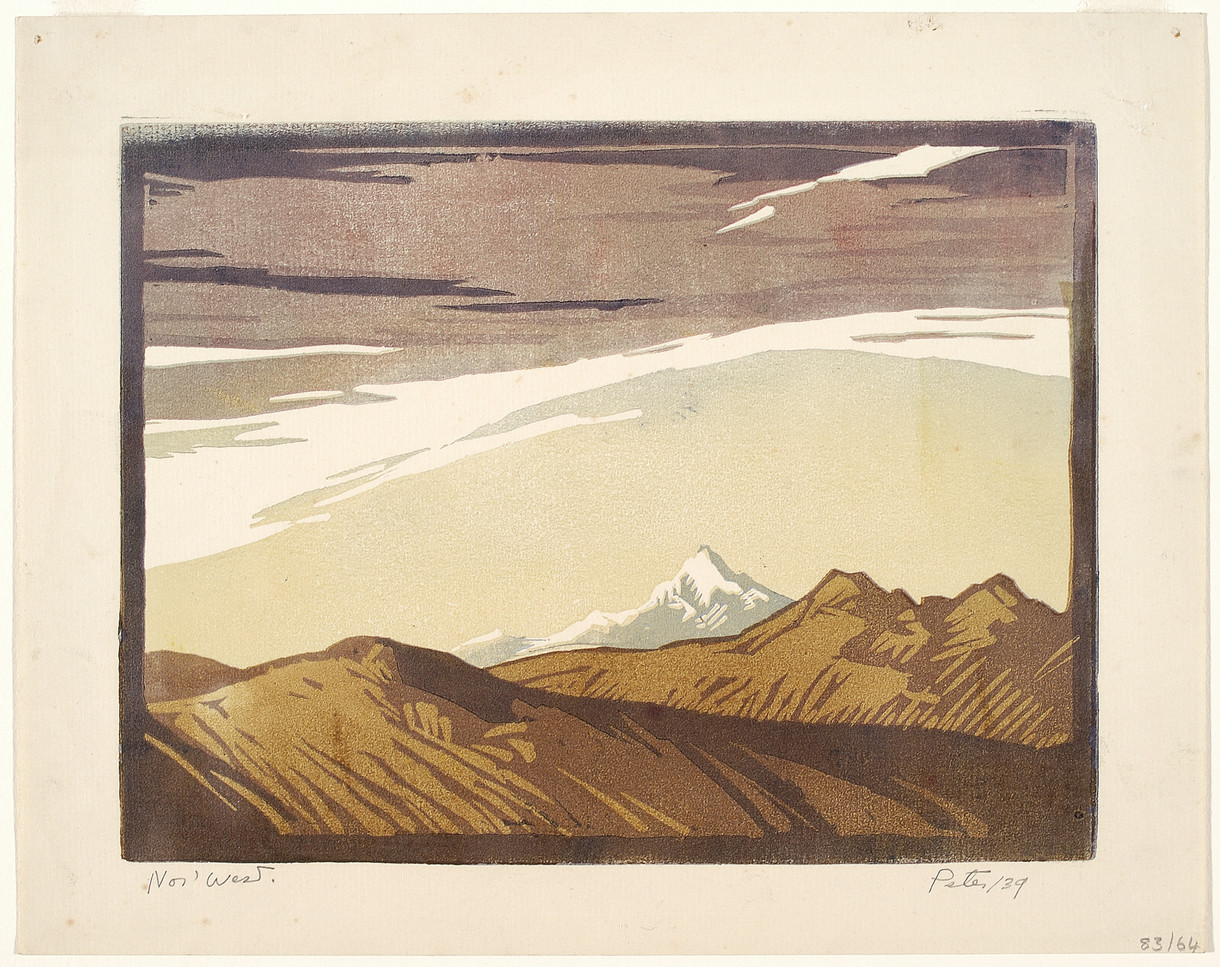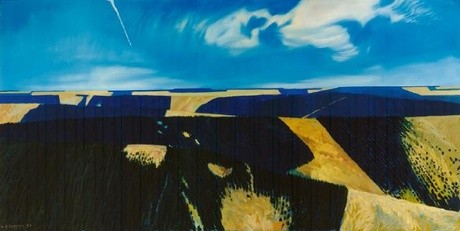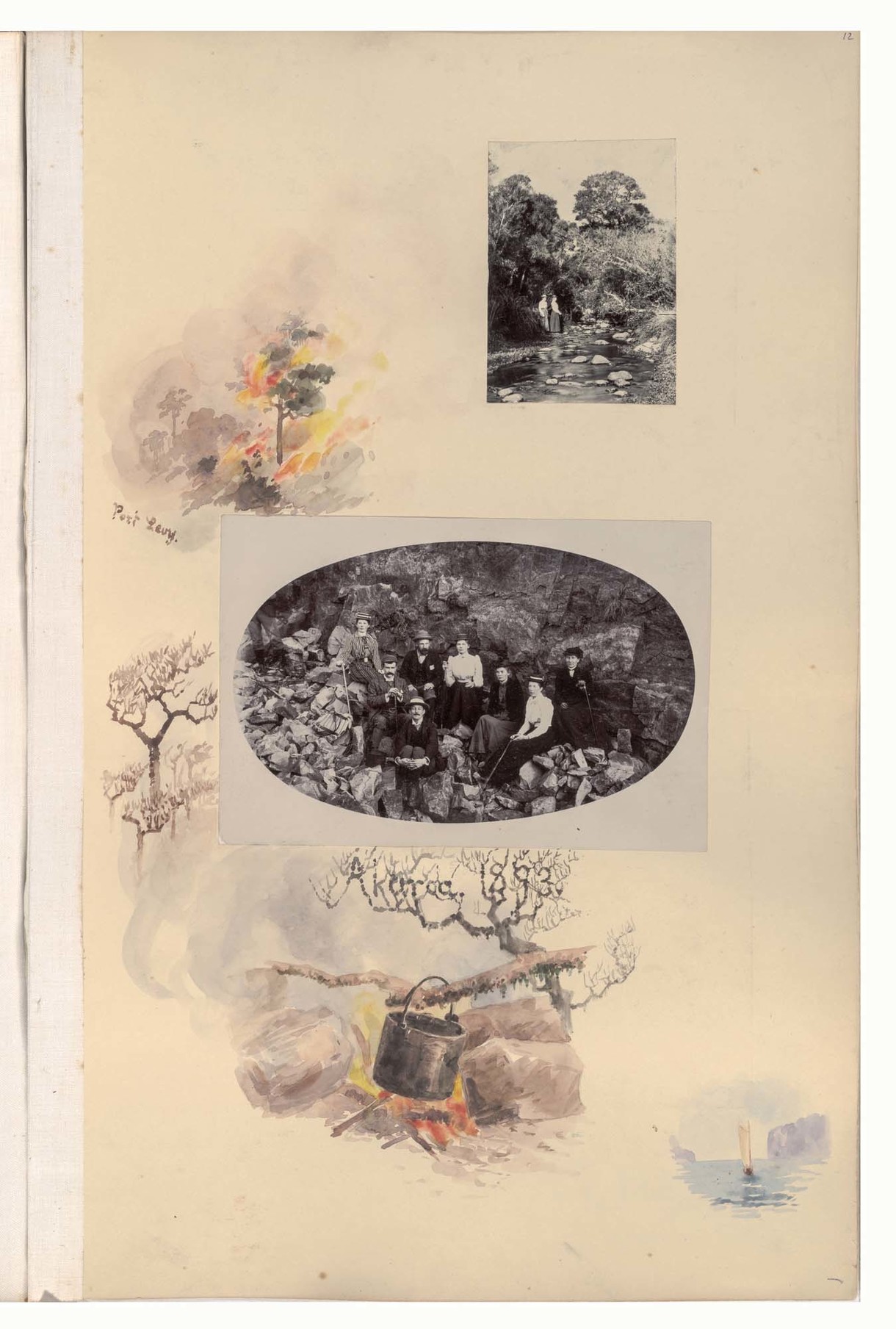Ivy Fife
Aotearoa New Zealand, b.1903, d.1976
The Long Lookout
- 1950
- Watercolour
- Transferred from Christchurch City Libraries Ngā Kete Wānanga-o-Ōtautahi collection, 2001
- 625 x 732mm
- 2002/156
- View on google maps
Tags: hills, landscapes (representations), natural landscapes, paths
'Tu-Te-Raki-Whanoa, the son of Aoraki, is the atua [demi-god] who shapes the wrecked waka to ready it for people. His first great task is to defeat the south-easterly winds roaring along the side of the wreck. He invents peninsulas. He rakes all the rubbish of the wreckage and piles it up like a gigantic break water. Thus you have the Canterbury Plains and a sheltered place for his next invention, Whakaraupō [Lyttelton Harbour] and Akaroa Harbour. He then depresses his heel and creates Waihora [Lake Ellesmere], later claimed by the exploring ancestor, Rākaihautū, as Te Kete ika o Te Rākaihautū [the fish basket of Rākaihautū].' —Sir Tipene O’Regan
(He Rau Maharataka Whenua: A Memory of Land, 17 September 2016 – 18 February 2017)
Exhibition History
Picturing the Peninsula, 21 April - 22 July 2007
The Long Lookout / Panau is a prominent headland lying between Little Akaloa and Raupo Bay on the north-eastern coastline of Banks Peninsula. The prominent landform was once the site of a major defensive pā which was able to accommodate a large population if required. Some Peninsula Ngāi Tahu families sheltered here during the kai huanga (eat relation) feud of the 1820s and the pā was again in use when Te Rauparaha sack Onawe pā at Akaroa around 1831.
One of Christchurch artist Ivy Fife’s favourite locations on Banks Peninsula was the north eastern bay of Little Akaloa. Fife made many sketching trips to the Bay and also explored neighbouring locations such as the Long Lookout.
This prominent headland is the one between Little Akaloa Bay and Raupo Bay on the northeastern coastline of Banks Peninsula. Ivy Fife has created not just an attractive representation of the peninsula landforms, but also an impressive adjustment of form and tone to create a rhythmic unity. The Long Lookout displays Fife's mastery of watercolour painting, with the carefully applied washes capturing the sun-drenched tussock and pasture grasses. Her landscape has the distinct forms characteristic of the Canterbury School of the early 20th century.
Fife was born in Christchurch and studied at the Canterbury College School of Art from 1920 to 1931. In 1936 she became a member of the College staff, teaching landscape painting, a position she held until her retirement in 1959. In 1954 Fife was appointed to the Robert McDougall Art Gallery Advisory Panel. Her work was exhibited widely throughout New Zealand and she was represented in the 1951 Festival of Britain, held in London, in the ‘International Women's Art Club’ exhibition. (Label date unknown)
